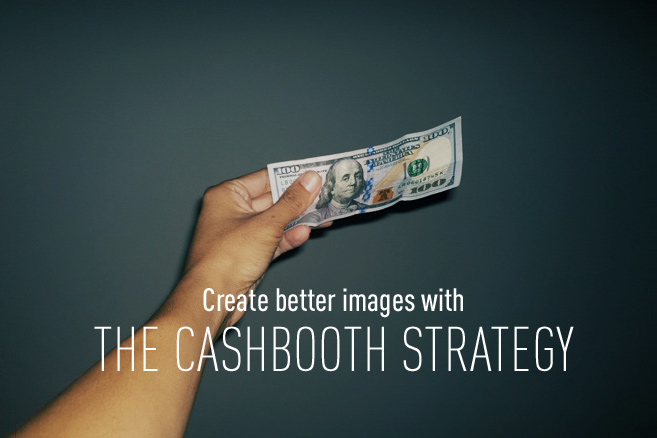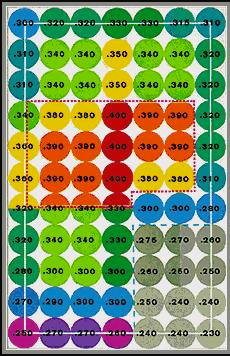“In the beginner’s mind there are many possibilities, but in the expert’s there are few.”
—Shunryi Suzuki
This is a time of many and a time of much.
An age of greedy abundance and pervasive emptiness.
Images flit in and out of the stream, our attention spans whittled to nothing more than the flick of a screen.
Scan. Double tap. Move on.
And in this media-saturated torrent, if you want to stand out, then now more than ever, you have to create pictures that say who you are. Not the ones that looks good. Not the ones that impress people. Ones that say This is me.
Because though approaches may vary the problem is always same. In every picture you create, you’re going to have to tell us your answer to one simple question:
What is the point of it all?
The problem when technology gives us all we can eat is the same tummy ache any kid in a candy store knows all-too-well. We can now capture nearly as much of anything as we want, but when we sacrifice choice, we have to be ready live with the hangover.
As sociologist Zygmunt Bauman says:
We have moved from a period where we understood ourselves as “pilgrims” in search of deeper meaning to one where we act as “tourists” in search of multiple but fleeting social experiences.
It is absence that creates meaning.
Strip away. Be deliberate. You have to choose what not to shoot, what not to frame, what not to chase. Because the less we can bear to give up the abundance, the less we become.
Possibility is a blessing and a curse. It’s a chance to see more in less, but at the peril of seeing less in more. Do not make possibility a limitation.
A SOLUTION
Ted Williams, one of the greatest hitters in baseball, attributed his success largely to one simple fact: He only swung at the good pitches.
He was so precise, he divided the strike zone into 77 sectors, each the size of a baseball and knew his probability of success for every single one of them. You can see his obsession to detail in the image below. He maps out the probabilities for each area in the strike zone.
Can you be as obsessive with your photography?
Elimination isn’t removal. It’s the potential that comes from immersion.
Don’t be tempted by the gloss of style and the pressure of trend.
The lure of the impressive paired with the fear of loss are a toxic highball that feels damn good going down, but makes junkies of us all, constantly on the hunt for our next hit of bright, shiny likes at the expense of our very own selves.
Validation is cheap. But discovery has to be earned.
Sure, we can amaze our friends and confound our enemies, but even when money, status, and livelihood are on the line, they must take a back seat to the bigger question:
What is the best version of you?
And if that’s too impractical, do we need to look any further than fallen behemoths like Dell, McDonalds, and Sears to see that relevance is not scale, but depth?
Don’t be a tourist in your own life.
THE CASH BOOTH STRATEGY
Here’s a simple process you can use whether you have seconds or hours to shape your images. Use it well. Use it often.
Photography isn’t a first-person shooter, and you don’t need video game reflexes. You just need to watch.
Somewhere along the way, you’ve probably seen those silly cash booths that show up on game shows and conferences. A contestant steps into a box, and money flies all around, as they desperately reach for bill after bill.
Of course, it’s a setup.
It looks like you can just scoop all the cash straight out of the air, but the distraction of reaching for everything leads most to catch nothing. The best way to maximize your take is to focus on one bill then another then another, instead of flailing all around.
Surprisingly, finding your voice and taking a picture are not terribly different.
1. Settle down
You can’t find your voice, if you can’t hear it. In the lighting round, rapid-fire bonanza of extravaganza that is a wedding, this is all the more important. Stop. Breathe. Listen to the voice inside your head, and feel it with your heart. Ask yourself, “Why am I interested in this?”
Your audience will be fascinated only if you are fascinated.
2. Observe
Stare. Look. Get microscopic. Cut out everything that distracts from your interest and add anything that enhances it. Dig, dig, and dig.
Remember, every time you move the camera, you change the relationship and properties of every object in front of your lens. Lines can become curves. Light can become dark. People and objects overlap and intersect. Every little thing changes the meaning of the image. Have you let yourself notice them?
3. Wait more, more, then more
Sit in almost any spot long enough and something amazing will happen there. Magic comes to those who wait, and once you’ve taken the time look and feel, you’ll be primed to see it.
Very often, the most meaningful shots start out as the most obscure and opaque. Your mind needs time to put together the pieces.
Pictures aren’t defined by light, composition, or space. These are just tools for meaning. Meaning comes once you know how to put it all together. It can be conveyed just as easily by the perfect expression as it can by the perfect composition, but neither come easy, and you have to figure out what you need.
Once you connect the dots, wait and let the scene unfold. Also, be ready for surprise. An arm popping in, the odd expression, a dog walking by. These things are gems.
4. Get focused
Be intentional, whether you shoot one shot or a thousand. Even if you shoot randomly, do it for a reason with an idea in mind, because it’s not about the world in front of you. It’s about you, and an aimless mind never hits its targets.
Repeat and refine as much as you need to until you go past perfection or the opportunity is lost. Refine by timing, refine by composition, refine by both. Inches should matter. If it’s not clear what you’re going for when you look at your sequences when you edit, next time out, slow down and wait even more.
For the same reason, don’t delete your shots as you go. They’re a record of your thoughts, and you should review what you were trying to do and see how well you performed. It’s a big difference to cull one out of three shots, where only one is acceptable, than to cull where all three can work. The former is a statement of quality. The latter is a statement of voice.
Remember, quantity can be a blessing or a curse, but the temptation is to embrace the curse. You have to turn that around.
USING IT IN THE REAL WORLD
Here’s an example of The Cash Booth Strategy in action. It’s a simple sequence in the order I shot it. The first few are there for context, then the sequence starts on the fourth image.
Although I’m only playing with minor changes in composition, you can see that I’m working through things to settle on the expression I want. The thing that caught my attention was her eyes, but seeing her smiling, I focused on that first.
As I watch, wait, and adjust my angles, I notice the make-up artist’s hand periodically blocks Kasia’s mouth, isolating her eyes. That was my shot.
While the smiling image at the start of sequence was perfectly fine, it doesn’t have the type of surprise and oddity to command the mind’s attention. I was looking for something to pull the viewer into the scene, so it was the two shots below that were my finalists.
In this first one, I thought the angle of her head and her wide eyes gave the picture a great intensity. It just cuts through the wall between viewer and image with an intrigue that doesn’t show up in the other shots in the sequence.
With that said, I wanted something more figurative than literal, so as much as I love the intensity, it also makes the image about the expression instead of the feel.
In this image, the expression is more distant. The mood comes from the light and the composition instead of her emotion.
Without the emotional undertones, I felt both Kasia and the picture had more mystery. There’s an impenetrability, but still an intrigue.
I tend to think it’s the mystery in life that enables the fascination. There are no answers. Just questions. Life is about pushing in and creating our own worlds in the face of the impenetrable, and the picture better captures this.
In contrast, if you were to look later in the set (there’s a link below), you’d see a picture where Kasia is almost teary-eyed during the ceremony. There, the emotion serves an important function, because it tells us about her relationship and her emotional state. There’s value in simply documenting that she felt it.
The power of the expressions when she was getting ready, on the other hand, comes not from the fact that she felt them, but from what they make us feel. The previous one was about her, this one is about the world. For that reason, my final pick was the second image.
Here’s the full set of images.
HOW TO MOVE FORWARD
You’re not going to find anything more powerful than observation. When you look, your ideas and thoughts will leak out. It’s hard to settle into each shot, but it makes all the difference. Sometimes waiting means minutes or hours, but sometimes it’s nothing more than half a breath.
When you look at others, ask what they included and left out in the frame to make the shot work. Ask why the timing mattered and what other possibilities might have been there. Above all, look to the way photographers develop their themes through their images, and not just how they took the picture.
I’ve put together a killer bonus to help you see more. I break it down not just into who to look at, but things to see from them. Grab it!




